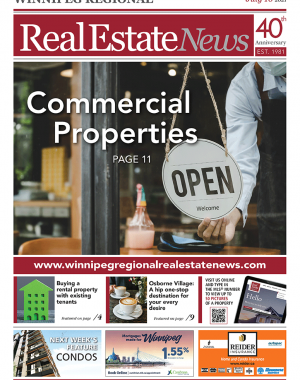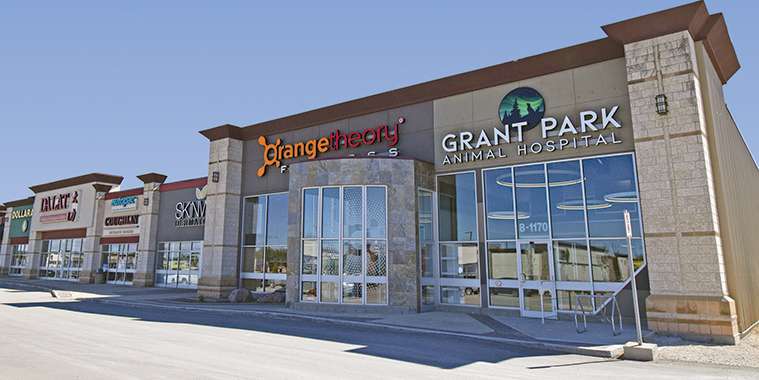By Dino Alevizos and Kenneth W. Jones
It’s been approximately a year and a half since the world as we know it was turned upside down. The effects on businesses and the commercial real estate industry have been rapidly changing, with landlords and tenants adapting to a new normal and finding ways to differentiate themselves from competitors.
From a retail perspective, the pandemic mainly crystalized trends that were already in motion well before anyone had heard of COVID-19. This includes the importance for retailers to have a well rounded and seamless shopping experience through omnichannel marketing plans, spanning across brick-and-mortar stores and online options. The focus on customer experience has grown and selecting the right commercial real estate to compliment a service or product offering has proved paramount. We’ve been hearing about a “flight to quality” in every sector of real estate, and that definitely includes retail. Having the right anchor on a shopping centre and being part of a carefully curated tenant mix can be the difference between winning and losing customers.
Notwithstanding retailers and restaurants having had their share of challenges navigating the pandemic, the retail industry remains strong with a flurry of leasing and selling activity. By now, everyone knows where their nearest cannabis retailer is located, regardless of whether they’re a customer or not. Since Cannabis became legal in Canada in 2018, there’s been a race for many to build scale and gain market share. Cannabis retailers have quickly become an important part of what makes a robust tenant mix within a shopping centre. Another important and very active category over the last 24 months has been medical. This includes general practitioners, walk-in clinics, pharmacies, dental, ortho, medical aesthetics, physiotherapy, and many more, all of which have been racing into traditional retail developments where convenience is key for satisfying existing patients and securing new ones. Daycares and Montessori Schools have recently become a fixture in many retail developments as they add another layer of convenience and help bring customers to a development.
Restaurants remain focused, learning new ways to implement safety protocols and win back customers. There’s been a growing emphasis on drive-thrus, expanded outdoor patios, and designated parking stalls for 3rd party delivery services.
Real estate investors are hungry to find acquisition opportunities in the retail space, with a premium on the “grocery anchored neighbours shopping centre”. It’s in the view of many (including our own), that grocery stores, medical services, restaurants, liquor and cannabis stores, hair & nail salons (just to name a few), are here for the long haul, and we’re excited to see what they have in store next!
It is almost a “Tale of Two Cities” or at least a tale of two commercial sectors when you start to bring office leasing into the mix — especially downtown office leasing. A quick survey of just over 25 of the major office buildings in the downtown area revealed over 900,000 sq ft (square feet) of vacant offices, with 400,000 of those available in the seven major towers surrounding Portage and Main.
Looking for 20,000 sq ft? You have twenty buildings to choose from. Need 30,000 sq ft? You have thirteen choices. This is the definition of a “tenant’s market” and landlords are pulling out all the stops to become the most attractive option.
This sector is absolutely in flux with companies trying to figure out not only how to plan for a safe return to the office, but also what their future office is even going to look like. Do they downsize to accommodate less people in the office? Do they take a larger footprint so staff can feel comfortable with lots of social distancing area?
The trend for pre-pandemic offices was to go with a smaller overall footprint but with open areas where staff could huddle to brainstorm and collaborate. Two simple words have had a profound impact on that concept — “social distancing.” There’s no doubt we all know how big two metres is.
Human resource departments are now faced with some interesting challenges relating to office environments and the ability to be able to work remotely. Flexibility has now become an important amenity with which to attract, hire and retain key staff. Depending on which demographic staff belong to, the ability to work from home is valued differently. Younger workers with no families are jumping back into the office “pool” with both feet. Mid-levels with young families are looking for a balance between home and office, and those highly experienced staff with mature kids or “empty nests” place more value in the home office, at least for a few days of the week.
It will likely take a number of years for the downtown office market to regain its full vibrancy and strength.
Dino Alevizos is Vice-President, Commercial and Business Development, and Kenneth W. Jones is Office and Industrial Tenant Representative, both from Shindico Realty Inc.



